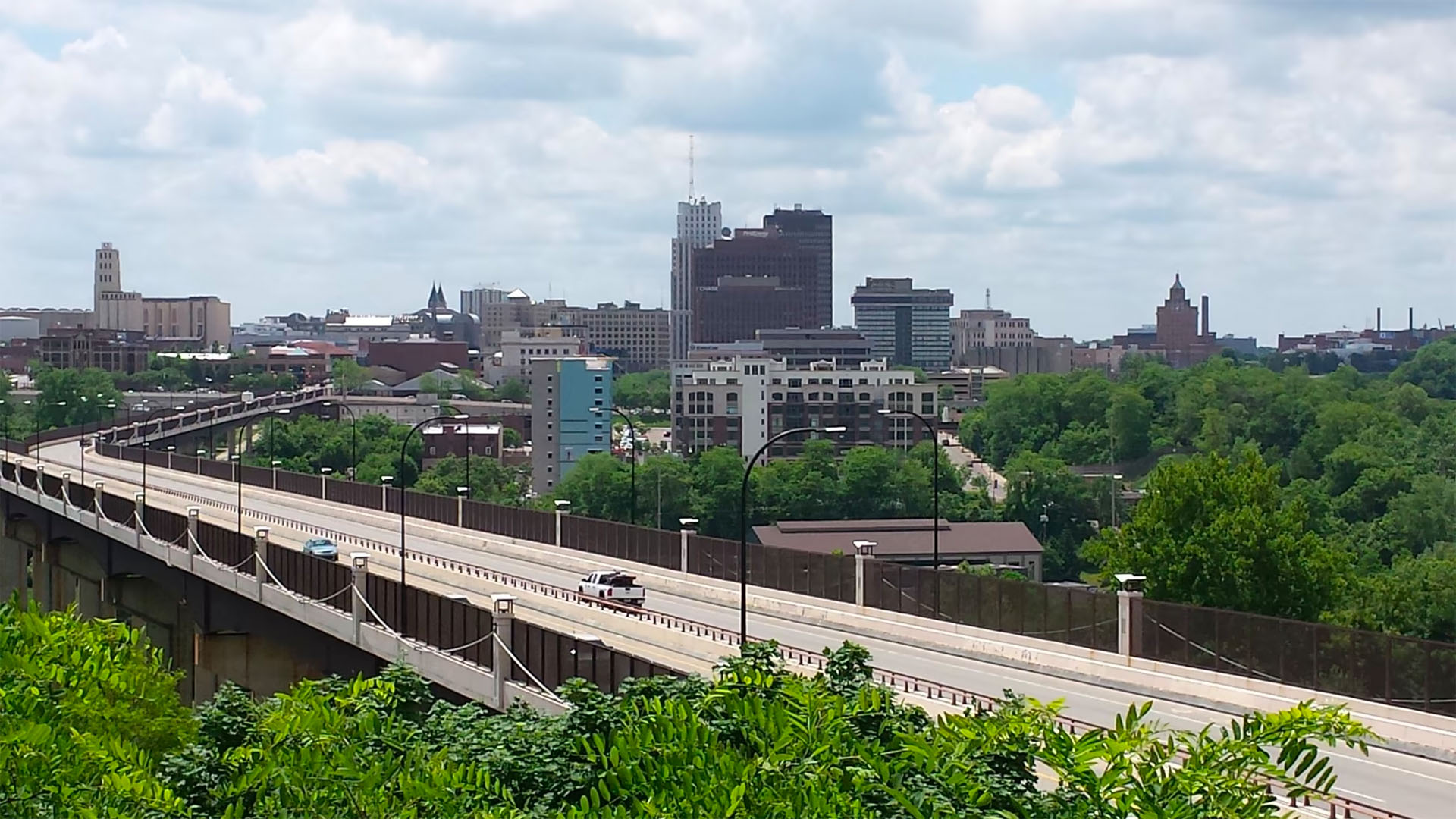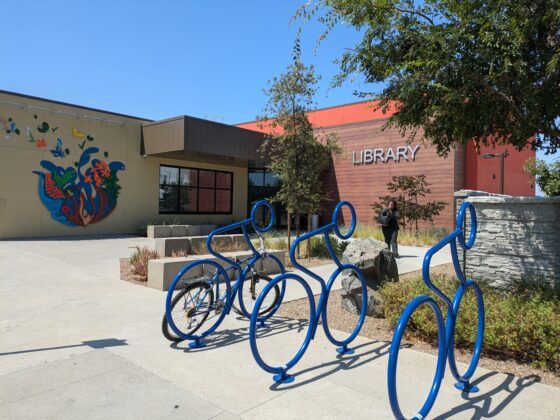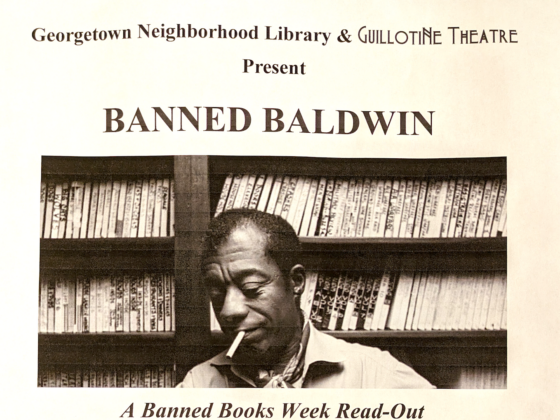What else is going on in the country, with less than two weeks in this consequential election season? Here is a sampling of recent articles and developments worth notice.
Prospects for local journalism: The strength and importance of local journalism have always grown from its attention to the local: What is happening in the town or region, what is getting better or worse, how local institutions are responding. Even as national politics have become more polarized and tribal, local news organizations have often been able to focus attention and engagement on important issues (rather than divisive spectacles) that can be solved (rather than just argued about).
This is why several trends of recent years have been so destructive in civic terms. These include the economic pressures on small, independent news outlets; the gobbling up of many surviving outlets by private-equity chains; and the determination of national TV chains like Sinclair to convert local TV-news outlets into extensions of the national-politics crusades. A recent story by Davey Alba and Jack Nicas in The New York Times has drawn a lot of attention for showing how the Sinclair model—franchised, faux-“local” versions of national messaging—is spreading to the print and online realms.
Some recent developments worth noting, on the other side:
- From Poynter, an essay by Steven Waldman on why these new pressures on local journalism matter, and what could be done about them. Waldman, a longtime friend, is among other things a co-founder of Report for America, which I have written about, and of the Rebuild Local News coalition. In his Poynter essay he points out the goods and bads of this moment in local news:
As a point of reference, consider this: One of the most positive trends has been the rise of local nonprofit news organizations. Today, there are about 300 of them, according to the Institute for Nonprofit News. Yes, that’s less than one quarter of the number of these faux news sites that have popped up recently.
The problem is increasingly not that communities will get no information but that they’ll get disinformation, or information whose provenance is unknown.
- From David Plotz, long of Slate and Atlas Obscura, the announcement of a new locally oriented podcast series, called City Cast. In a post on Medium describing the project, Plotz writes:
I’m starting City Cast because I believe the future is local ….
Thanks to the pandemic, a staggering economic crisis, the protest movement against police violence and systemic racism, and well, just 2020 in general, America has never needed great local journalism more than it does today ….
Where local news is sparse or feeble, communities suffer: Political activity declines; local businesses weaken; mistrust grows. We become more divided, more insular, and more hopeless. If you live in a community with hollowed-out media, you feel that every day.
Good luck to Plotz and his City Cast colleagues.
- For another illustration of an innovative local model, check out Canopy Atlanta, and its inaugural issue on the city’s West End—and this report by Rick Edmonds, of Poynter, about the way three regional papers are trying to expand rather than budget-cut their way to survival.
- And, for an economic-development perspective on which accurate local news matters, see a recent installment of The Chung Report, by James Chung, which has had an ongoing focus on development in Chung’s original hometown of Wichita, Kansas. In “Why Transparency Matters,” Chung explores how a medium-sized city like Wichita, with a strong university presence (Wichita State) and a historic role as a center of aerospace technology, can deal with its long-term civic and economic challenges.
Economic recovery after the pandemic: The story of the moment is of accelerating economic and public-health damage from the (disastrously managed) pandemic. The next story will be about the ways families, companies, cities, and regions can begin to recover.
Some of this effort will be national and global in scale. Some will be intensely local. Here are several worthwhile guides:
- From the Heartland Forward project, a report on an economic recovery strategy for Northwest Arkansas. Why this part of the country? Heartland Forward’s founders include younger members of the Walton family and, along with the Walton Family Foundation, it has concentrated on economic and civic revival in non-coastal America, notably including the Walmart headquarters area of Northwest Arkansas.
This new report (in PDF here) is largely devoted to both the immediate and the longer-term effects of the pandemic. It also addresses the region’s diversity and racial-justice issues. Historically, this part of the state (which was not part of the antebellum plantation economy) has had a large-majority white population; according to the report, only 2.5 percent of the local population is Black. The report flatly says that to progress, the region must intentionally make itself more welcoming and inclusive:
“It is paramount that the region’s major employers continue to attract and retain diverse talent … In addition, building up diverse populations assists new members to the community feel comfortable and secure, as well as helps to make the existing culture more welcoming to outsiders …. NWA [Northwest Arkansas] should consider ways to make diverse populations feel more welcome in the community …”
Even if you’re not interested in this part of the country, the report is worth noticing as an illustration of how regions with distinctive strengths and limitations can think realistically about their possibilities.
- From Jason Segedy, planning director for the city of Akron, two valuable essays on how cities can approach these new rebuilding challenges. One, in The American Conservative, is about how cities can become more “inclusive” even in the face of likely long-term decline. The other, for the Economic Innovation Group, is about how “legacy cities,” of smaller size and yesteryear’s industry, can find a future. He uses the example of another city we’ve written about, Dayton:
There is also a certain level of love for a mid-sized city like Dayton that is often not as present in larger places, where many people might be there for less emotional and more utilitarian economic reasons. This can lead to higher levels of civic engagement and community support. Innovators, entrepreneurs, and the civically-engaged and community-minded can potentially have more of a positive impact, being bigger fish in a smaller pond. “When you really love something, you want to make it better,” says Torey Hollingsworth, senior policy advisor to Dayton Mayor Nan Whaley.
At the same time, the way that the economy has changed over the past four decades has made it far more difficult for these cities to succeed. Consolidation of major industrial corporations has really hurt cities like Akron and Dayton, as these cities first lost thousands of blue-collar production jobs and then ultimately lost most of the white-collar professional jobs that remained.
- From Allentown, Pennsylvania, an update on the ongoing redevelopment of the city’s old heavy-manufacturing sites. Several years ago John Tierney wrote about small, modern startups in what was once the Mack Truck plant. (It is now known as the Bridgeworks Enterprise Center.) The next industrial site for renovation is a former steel fabrication plant, known as the Metal Works. You can read about its situation here.
- From the Institute for Local Self-Reliance, a report on how much money state and local governments have already devoted to sustaining small businesses through the pandemic era—but how much more federal help will inevitably be needed. The report (PDF here), by Kennedy Smith, says:“The relief programs provided by local and state governments have kept hundreds of thousands of small businesses afloat so far and helped them adapt to the surreal commercial environment the pandemic has created. But absent additional and ongoing funding these crucial programs will cease, leaving hundreds of thousands of small businesses at risk of going under in the coming months.”
Small businesses across the country have been through very tough times these past six-plus months. But—as in so many other aspects of pandemic effects—without help, even tougher times may lie ahead. For a previous ILSR report on steps cities can take to sustain their independent businesses, see this.
- One of our ongoing threads through the years has been the importance of skilled-trades jobs, as sources of opportunity and offsets to an ever-more-polarized economy. Advanced-manufacturing jobs, work designing and maintaining robotic systems, jobs in aerospace and health care and advanced agriculture—almost all of these have had more job openings than applicants in recent years, and many do not require a four-year college diploma. NPR has a new segment on this trend, and the importance of apprenticeships. You can read its report by Adedayo Akala and listen to the broadcast here.
Cityscape: I very much enjoyed this map of fall foliage in Sioux Falls, South Dakota, where we have spent a lot of time. Check it out. Sample shot below.
/media/img/posts/2020/10/FallLeaves/original.png)




